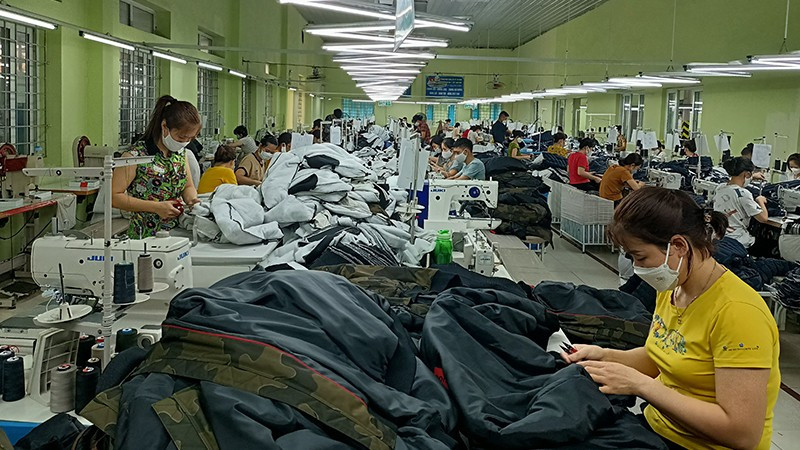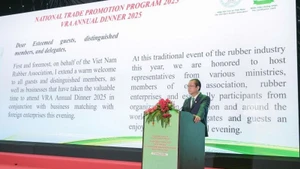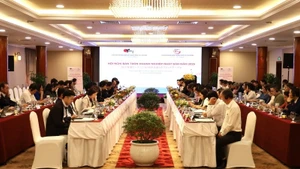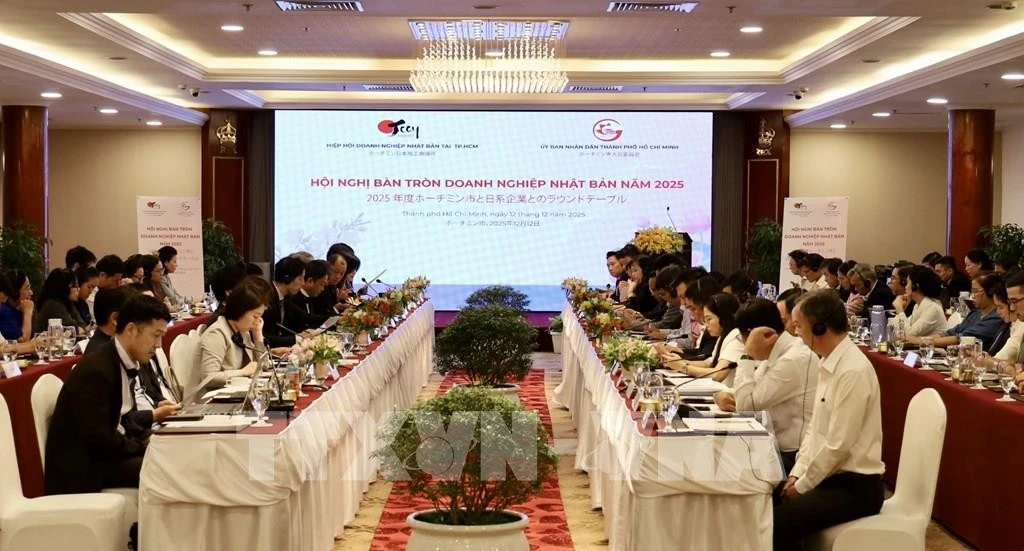In addition to key export markets such as the US, Europe, Japan, the Republic of Korea, and China, in which export growth has been sustained, the markets of ASEAN, Russia and Canada are emerging as bright spots for Vietnamese garment makers in bolstering their exports.
Vietnam’s share of garment exports to the US rose from 17.6% to 18.3%, while its share in Europe was 4.4%, despite a 5.5% fall in the continent’s garment imports.
Stepping up production
According to Tran Nhu Tung, Chairman of Thanh Cong Group (TCG), the company’s total revenue in the past seven months reached 91.4 million USD, up 16% year on year and reaching 58% of the full-year target. Its post-tax profit reached 7 million USD, up 32% and exceeding the full-year target by 2%.
TCG’s three main revenue sources are garments, fabrics, and yarn, which account for 80.3%, 13.4%, and 5.3% respectively. The company has secured orders for 90% of the revenue target for the third quarter and 82% for the fourth quarter.
Tung said the company targets revenue of 157.7 million USD in 2024, up 12%, and post-tax profit of 6.68 million USD, up 21% against 2023. To realise such goals, TCG will continue taking various measures to increase investments and orders, boost exports, and maintain the jobs and incomes of its workers.
In addition to traditional exports, the company is working to diversify its environmentally friendly products, recycle, and create high-value products to enhance the value chain and expand its customer base in markets with plenty of potential for export growth, stressed Tung.
Recently, the garment sector has been facing a shortage of workers, who either choose to work overseas or for foreign-invested companies, despite improvements in the incomes of garment workers. Garment makers also faced order delivery pressure and difficulties with low prices.
Vinatex Chairman Le Tien Truong shared that as the world’s third largest garment exporter, which employs over 2 million workers and exports 3.5-4 billion USD worth of goods each month, Vietnam is substantially affected by changes in the world market.
However, Vietnam’s garment sector recorded relatively decent growth in the past eight months, especially in July and August, when revenue reached between 4.2 and 4.4 billion USD, the highest level since August 2022.
Following trends
The current macroeconomic situation is relatively bright and fashion companies’ inventory levels are falling, indicating that garment orders will improve in the final months of the year. US inflation is low and the Fed has signalled that there will be a rate cut in September and another cut before the end of the year. Interest rates in the UK were reduced on August 1, the second time since March 2020, giving hope that demand will increase.
The inventory levels of major fashion companies in the world were relatively positive in the second quarter, with that of Nike down by 11% and Levi’s by 7%. Their business performance and profits also improved sustainably. H&M and Uniqlo reported the most outstanding profit growth at 49% and 36%, respectively. Garment makers are having high hopes that orders will improve, which is expected to help them record better results than the previous year.
In 2024, Vietnam’s garment sector targets an export revenue of 44 billion USD. With positive market signals, such goal is entirely attainable. However, the industry is still facing many challenges as slow market improvements, shipping costs, wages, electricity costs, and bank interest rates are forecast to continue to affect garment makers.
According to Vu Duc Giang, Chairman of the Vietnam Textile and Apparel Association (VITAS), Vietnam’s garment exports witnessed many improvements in the past eight months, however this was mainly driven by the relocation of orders from other countries to Vietnam, while actual global consumption has not recovered. But new-generation free trade agreements are great motivations for Vietnam to maintain markets and boost exports.
Vietnam’s garment sector is also facing a number of difficulties when importing countries always look to introduce strict standards that require Vietnamese enterprises to meet. Therefore, enterprises need to pay attention to investment to catch up with trends in sustainable green technology development and meet the requirements of partners. In addition, during the planning of industrial parks, localities need to give priority to textile dyeing to proactively secure fabrics domestically for production and export.
Vinatex General Director Cao Huu Hieu assessed that Vietnam’s orders will increase by 5% while other countries have no room for further growth. The recent trend of relocating garment orders from China to Vietnam has become clearer as the US enhances supervision under the Uyghur Forced Labor Prevention Act.
At the same time, enterprises in Bangladesh are facing many strikes due to workers’ low standards of living, political instability, and rising violence. These factors are opportunities for Vietnamese enterprises to expand their markets, increase production, and bolster exports.
















